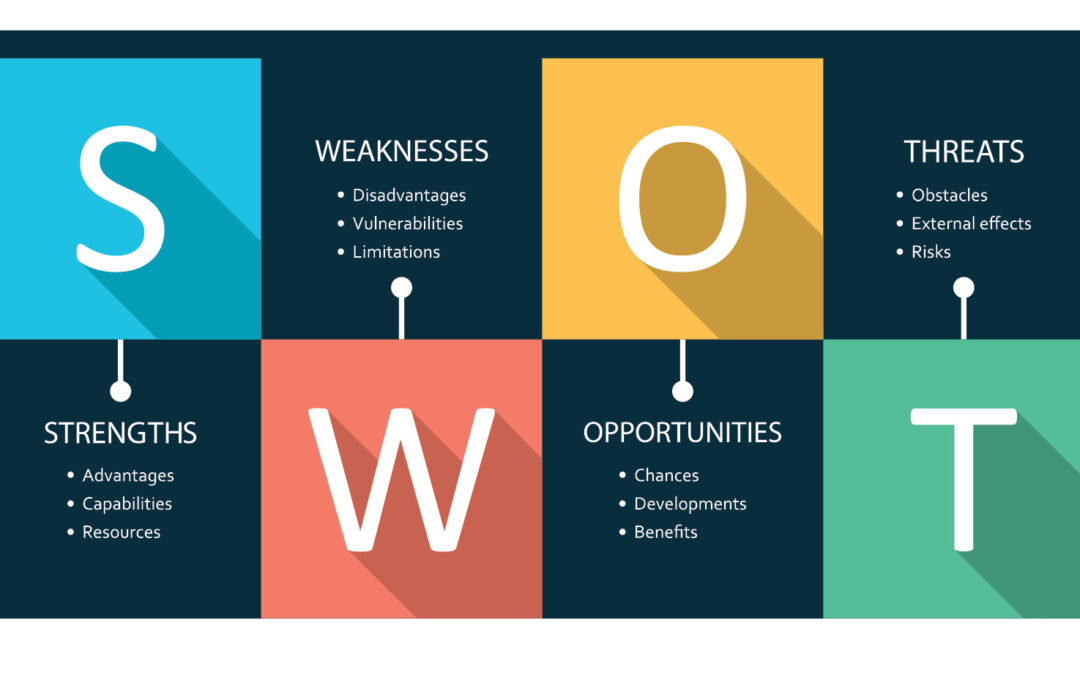A SWOT analysis is a strategic planning tool. It is a useful for businesses of all sizes, as it can help you make better decisions about your products, marketing, and overall strategy.
The acronym SWOT stands for:
- Strengths: These are the things that your business does well. They could include your products, services, employees, or marketing strategies.
- Weaknesses: These are the areas where your business could improve. They could include your financial performance, customer service, or product development.
- Opportunities: These are the external factors that could help your business grow. They could include new markets, technological advancements, or changes in consumer behavior.
- Threats: These are the external factors that could harm your business. They could include competition, changes in regulations, or economic downturns.
To conduct a SWOT analysis, you will need to gather information about your business and the external environment. You can do this by conducting market research, talking to customers, and analyzing your financial data. Once you have gathered this information, you can start to identify your strengths, weaknesses, opportunities, and threats.
Once you have identified your SWOT factors, you can start to develop strategies to capitalize on your strengths, address your weaknesses, take advantage of opportunities, and mitigate threats. For example, if you have a strong brand, you could use this to launch new products or enter new markets. If you have a weak customer service department, you could invest in training or hire new staff.
A SWOT analysis is a valuable tool for businesses of all sizes. By taking the time to conduct a SWOT analysis, you can gain a better understanding of your business and the external environment. This will help you make better decisions about your products, marketing, and overall strategy.
Here are some additional tips for conducting a SWOT analysis:
- Be honest. When you are identifying your strengths and weaknesses, be honest with yourself. Don’t sugarcoat your weaknesses, as this will only hurt you in the long run.
- Be specific. When you are identifying your opportunities and threats, be specific. Don’t just say that there is a “threat” from competition. Instead, identify specific competitors and their strengths.
- Be timely. The SWOT factors that are important today may not be important tomorrow. Make sure to update your SWOT analysis on a regular basis.
A SWOT analysis is a simple but powerful tool that can help you improve your business.
